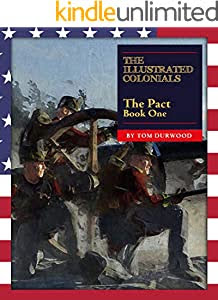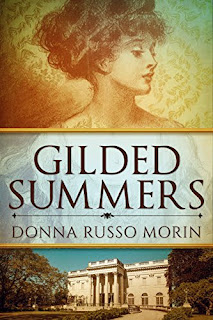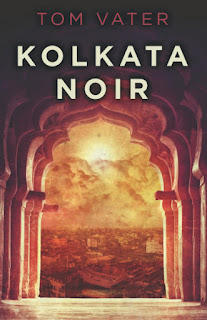Weekly Reader: The Illustrated Colonials: The Pact Book One by Tom Durwood; Beautifully Illustrated Strong Character Driven Start Of Series About 18th Century International Teens Getting Involved in America's Revolution
By Julie Sara Porter
Bookworm Reviews
Spoilers: Tom Durwood's book, Kid Lit: An Introduction to Children's Literature, dissects children's literature and explores the deeper meaning in many of our pop culture touchstones such as Harry Potter, His Dark Materials, Superhero comics, Pixar and Disney animated films, Afrofuturistic novels, early adventure novels and comics like Tarzan and Tintin, and the Star Wars franchise.
My personal theory is in putting the book together and researching various works and essays, Durwood thought "I could do that. I could write my own children's book series with a plucky group of young adventurers. Stronger themes that could be hidden inside the plot and the readers will appreciate the characters and adventures and afterwards may understand something."
Well I for one am glad that Durwood accepted the challenge.
Durwood's wrote The Illustrated Colonials, an alternate history in which six young people from different countries in 1775 are selected to attend The School for Young Monarchs in Alsace Lorraine. Inspired by the Enlightenment theories of liberty, freedom, and equality, the students learn to fight against tyranny and see each other as equals. They are to take those lessons and fight for them when they return to their home countries.
The first book, The Pact, is a beautifully illustrated strong character driven novel that introduces us to the six protagonists, the school, and the conflicts that result between the students and others. The themes of liberty, equality, community, and cooperative partnership are also revealed in The Pact.
The group of six are a diverse bunch, from different countries and backgrounds, all with different reasons for registering at the school. They are:
Jiayi Mei Ying, from China-The daughter of a prominent family that manages the waters, lands, and operations on the Yunhe Canal territories. She arrogantly lords over the family's subordinates. Her high handedness causes her grandfather to disinherit her. The local teacher in Zhengzhou begins teaching phrases like "common sense" and "no taxation without representation." Mei Ying is uncertain but figures that she couldn't do worse than attend the School For Young Monarchs and maybe become a better leader.
Gilbert Marie John Paul Joseph Roche Yves Gilbert du Motier, Chevalier of the Noailles Dragoons from France-Gilbert's name will be recognizable to Revolutionary War buffs. He is from a noble aristocratic family and is a dragoon fighting in battle. Despite his wealth and privilege, he is not blind to the troubles faced by the poor. He is also inspired by the revolutionary ideals and his own sense of adventure to attend the School For Young Monarchs.
Sheyndil Czerzinsky AKA Shay from Russia-A former peasant, Shay is interested in new technologies and planting seeds for agricultural production. Her interests in technology and agriculture are shared in higher places particularly by Catherine the Great, Empress of Russia. Catherine decides to patronage the young woman so she can represent Russia at the school.
Leo Krummensee-Grabmaler from Brandenburg-Leo is the son of the Heir of Hohenzollem, Lesser Magistrate of the Margraviate of Brandenburg. The arrogant noble and soldier is informed that a petition is being circulated where he and his sister could lose their titles and estates. Leo's sister plans on marrying while Leo decides to lay low in Alsace Lorraine and attend the School.
Prince Mahmoud Mustafahn Hasan Husameddin Cezayrili, third son of the sixth wife of Sultan Abdulhamid Caliph of all Muslims, Secular Ruler from the Ottoman Empire, Turkey- Mahmoud is the spoiled overweight son of the Sultan. His mother is tired of the boy having everything handed to him. She wants him to study at the School to prepare for his eventual role as Sultan.
Will Oldenbarnevelt from the Netherlands-Will is the youngest son of a prosperous merchant. Since his father declared that Will's older brother, Casper, will inherit the family business, Will gets nothing. Will is well read, shy, and a strategic chess master, his mother points out. She suggests that Will at least get a smaller trade route in the Bosporus. Before that though he has to attend a certain school.
By their powers combined, the six set out to become heroes in their day, sort of an 18th century version of the Planeteers Minus Captain Planet. (Maybe more like Captain Liberty?) At the school, the students learn about the Enlightenment philosophies and start practicing them in their daily lives. They begin to work together and use their talents in fighting, engineering, agriculture, scholarly research, finance, and leadership to aid each other.
There are a few times when they are challenged by opposing forces such as former enemies from their countries and soldiers who represent forces who are opposed to this idea of togetherness. The Super Six learn to fight alongside each other as a team putting those values that they have been taught to practical use.
Of course fighting as a team doesn't mean that they will always get along. Personality conflicts abound almost as soon as they meet. It begins right away when Mei Ying defends Will from a bit of physical joshing by Gilbert. She gives the Frenchman a serious kick earning respect from Will, Leo, Sheyndil, and oddly enough Gilbert.
The students get into plenty of arguments such as when Sheyndil, Leo, and Gilbert fight about what it actually means to be a royal and who in their group deserves that moniker.
Mahmoud and Gilbert get into a particularly fierce disagreement about whether servants do or should respect their employers and what rights that they have. These conflicts show how the characters were raised and how their upbringing shaped them so far. However, the fact that they are at that school and able to listen to each other shows that they can reject some of those limiting beliefs from their childhoods and evolve and grow as people.
It is genuinely heartwarming when this group accepts each other's friendship to the point that they make a pact to always aid when one is in trouble. They would send for the others and they would come running.
I would be remiss if I did not mention the beautiful illustrations. Various art forms including portraits, photographs, and prints went into this work. The names of the illustrators themselves including Timothee Mathon, Sahab Sewarty, Jessica Taylor, and Mai Nguyen et al fit two pages. Many authors stick with one illustrator, but Durwood uses several. This fits into the overall narrative of the book.
While the story is set in an alternate historical continuity, it is also treated like a real event. One of the students actually was a real person. So like any famous people from another time, there may be several pictorial depictions of them. After all, how many times has George Washington or Benjamin Franklin been captured in art?
The various pictures show the six characters and their world as one that could have happened.
Through the students' relationship in The Pact, we learn how history could have been different. Maybe from that, the alternate present could be one of equality, cooperation, and understanding. This book perhaps could be a guide on turning that alternate possibility into a reality in this timeline.








